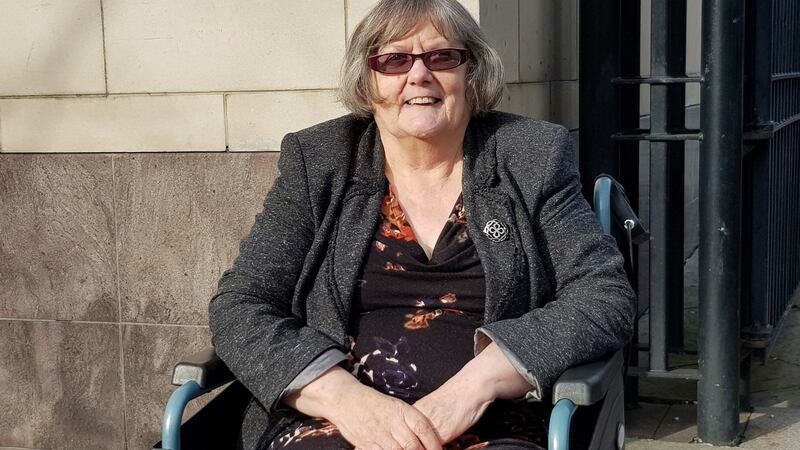A man who was shot in the back during a disputed shooting incident in west Belfast in 1971 has described how giving evidence to an inquest made him feel like he was on trial.
Joseph Millen was hit by a bullet just below his right shoulder blade which passed through his back and out of his left side.
He lay on waste ground afterwards for about two hours while the shooting went on before he was able to be taken to hospital.

Speaking outside court, he said he was lucky he had not bled to death
Fr Hugh Mullan (38) and Frank Quinn (19) were killed in the incident on the waste ground close to Springfield Park on August 9th, 1971.
The day had seen attacks on the area by loyalists from the nearby Springmartin estate.
Mr Millen was giving evidence to an inquest examining a series of shootings in which 10 people died in August 1971.
The sequence started after the introduction of internment in Northern Ireland on August 9th, and mass arrests sparked rioting across the region.
Over three days, from August 9th to 11th, 10 people died in shootings at a number of locations in west Belfast.
‘Ballymurphy Massacre’
The events have become known as “the Ballymurphy Massacre”.
Soldiers have long been held responsible for killing all 10 people, but the accepted narrative became clouded last year when former members of the loyalist paramilitary Ulster Volunteer Force claimed their organisation was also involved.
Mr Millen told the inquest he saw loyalists in Springmartin throwing stones at Springfield Park, and also saw a soldier wearing a black beret on the roof of flats aiming a gun, but did not see him fire it.
He saw another survivor, Bobby Clarke, being shot on the waste ground, and went with Fr Mullan to help him. He described hearing Fr Mullan scream several times as he was shot and went to ground before being shot in the back himself.
Mr Millen described the situation as “chaotic”.
He told the inquest he believes the bullet that struck him came from Springmartin.
Mr Millen spent three weeks in hospital and submitted a criminal injury claim to the Northern Ireland Office (NIO). He was awarded £2,250, the inquest heard.
Revolver
He also told the inquest that before the main shooting incident he saw a boy with a shotgun and a boy with a revolver, and estimated they were teenagers. He said he did not see them fire the weapons and did not see them again.
Asked by counsel for the Ministry of Defence (MoD) why he did not tell them to leave in case they attracted unwanted attention, Mr Millen said he was not going to tell someone with a gun what to do.
He said no one was shooting from the waste ground.
Challenged by the MoD lawyer about how he would have seen any gunmen behind him if he had been lying face down, Mr Millen responded that he would have heard shots being fired.
Speaking outside court after giving evidence, Mr Millen described the experience as like being on trial.
“I thought I was on trial, that was how difficult it was,” he said.
“It’s hard to remember 47 years ago, getting asked so many questions, was I right or was I wrong.
“But it’s important to go through this process to tell people what really happened. It’s about time something happened about it.”
Evacuate children
Earlier the inquest heard from Eilish Meehan, who helped evacuate children from the area, and described the fear after Fr Mullan had been shot.
“We thought we were going to be overrun. We thought we were going to be massacred,” she said.
“I hadn’t a clue why we were being shot at. I am a citizen, I expect protection, people had gone down to the Henry Taggart barracks to ask for protection – that protection never came.”
Ms Meehan said she initially believed loyalists were behind the gunfire directed at the Springfield Park area, but now believes soldiers and loyalists were involved because of how the shots sounded.
Soldiers at that time mainly used high-velocity self-loading rifles (SLRs).
“I thought it was loyalists were firing on us,” she told the inquest.
“Now I think it was a mixture of loyalists and security forces mainly because of the type of the weapons being used. At that time there was a lot of gunfire – you got to know the different types of rifle fire. I think mostly it was SLR.”
The inquest continues.













